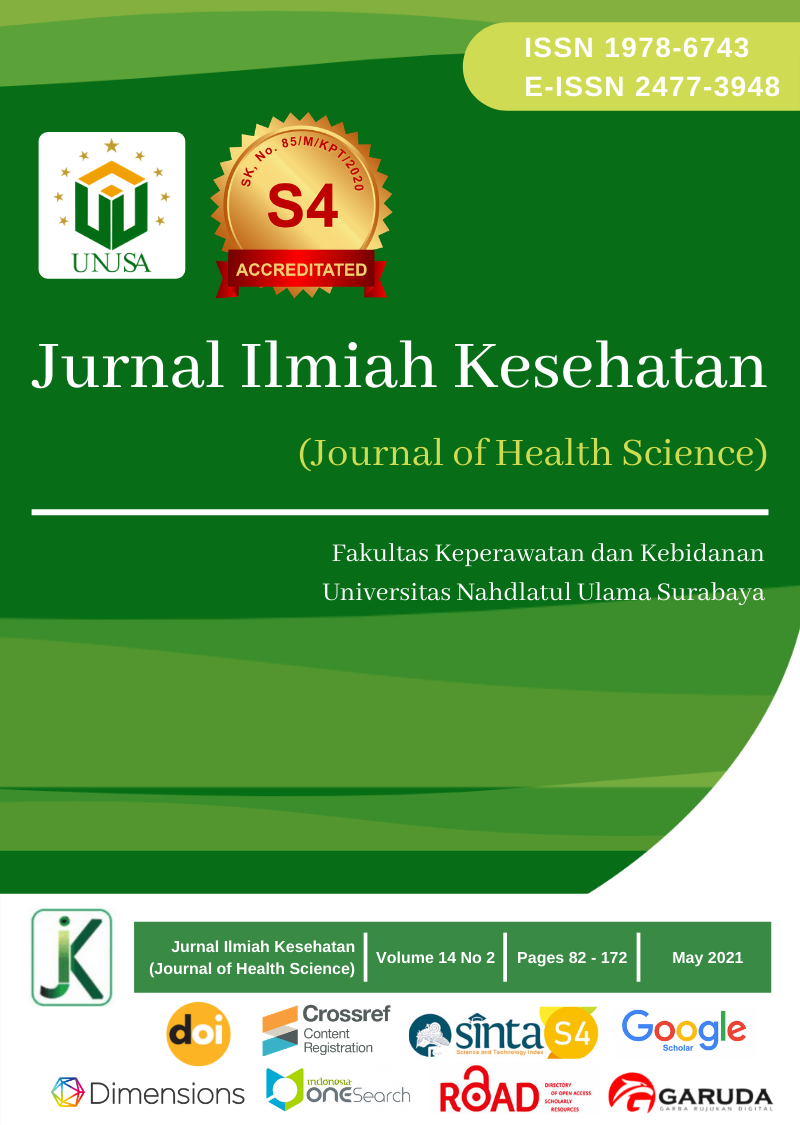Evaluation Of Programs For Stunting Prevention Management At Tajinan Public Health Center
Main Article Content
Abstract
Stunting is one of the problems that can human development globally. East Java is one of the provinces that has a high prevalence of stunting. This shows the low quality of health services. The government is committed to reduce stunting rates through several health policies. The policy is in the form of a program launched by the Indonesian Ministry of Health (Kemenkes), namely the Healthy Indonesia Program with a Family Approach (PIS-PK), Provision of Supplementary Food and the First 1000 Days of Life (HPK). The purpose of this study was to evaluate the intervention program for the management of nutritional status of stunting under five with elements of input, process and output. This research is a qualitative research. The initial informants were determined by purposive sampling technique. The data collection method was through in-depth interviews, observation and documentation of 6 initial informants consisting of the head of the puskesmas, the coordinating midwife for Children and Mother Health, the nutrition coordinator, the village midwife, framework and some target mothers. Two triangulation informants consisting of the family health coordinator and the district health office nutrition coordinator. The results showed that at the input stage, the health workers involved still needed additional, there were no nutrition workers. In the process element, some of the programs were well implemented including the family approach through home visits by framework, healthy programs for pregnant women, exclusive breastfeeding, growth monitoring, supplementary feeding, giving vitamin A except for the taburia program. In the output element, the coverage of the prevalence of stunting in the Tajinan Public Health Center, Malang Regency in 2018 was 17.24%
Downloads
Article Details
Copyright (c) 2021 rifzul maulina

This work is licensed under a Creative Commons Attribution-ShareAlike 4.0 International License.
References
Supariasa. Penilaian Status Gizi. Jakarta: Buku Kedokteran EGC; 2011.
Kemenkes. Riset Kesehatan Dasar. 2018.
Dinas Kesehatan Jawa Timur. Profil Kesehatan Jawa Timur. 2018.
Dinas Kesehatan Kabupaten Malang. Profil Kesehatan Kabupaten Malang. 2018.
Sistiarani C. FAKTOR MATERNAL DAN KUALITAS PELAYANAN ANTENATAL YANG BERISIKO TERHADAP KEJADIAN BERAT BADAN LAHIR RENDAH (BBLR) Studi Pada Ibu Yang Periksa Hamil Ke Tenaga Kesehatan dan Melahirksn di RSUD Banyumas Tahun 2008. 2008;1–86.
Akombi, B.J., Agho, K.E., ... Renzaho A. Stunting and severe stunting among children under-5 years in Nigeria: A multilevel analysis. BMC Pediatr. 2017;
Haile, D., Azage, M., Mola, T., & Rainey R. Exploring spatial variations and factors associated with childhood stunting in Ethiopia: spatial and multilevel analysis. BMC Pediatr. 2016;
Ali, Zakari, Saaka Mahama, Adams Abdul-Ganiyu, Kamwininaang Stephen K AA-R. The effect of maternal and child factors on stunting, wasting and underweight among preschool children in Northern Ghana. BMC Nutr. 2017;
Tiwari, Rina, Ausman Lynne M AKE. Determinants of stunting and severe stunting among under-fives: evidence from the 2011 Nepal Demographic and Health Survey.Nepal. BMC Pediatr. 2014;
World Health Organization. World Health Statistics 2012. Department of Nutrition for Health and Development. 2012.
World Health Organization. Childhoold Stunting: Challenges and Opportunities. Department of Nutrition for Health and Development. 2013.
RI KK. Pusat Data dan Informasi 2018. Kemenkes RI. 2018.
Kemenkes RI. Infodatin Pusat Data dan Informasi Kementerian Kesehatan Republik Indonesia. Kementrian Kesehatan Republik Indonesia. 2015.
Putri. Hubungan Tingkat Pendidikan Ibu, Pendapatan Keluarga, Kecukupan Protein dan Zinc dengan Stunting (Pendek) pada Bal- ita Usia 6- 35 Bulan di Kecamatan Tembalang Kota Semarang. J Kesehat Masy (JKM) Gizi Kesehat Masy Fak Kes- ehatan Masyarakat, Univ Diponegoro. 2012;1(2):617-626.
Sattu M. Karakteristik Balita Stunting Di Wilayah Kerja Puskesmas Teku Kecamatan Balantak Utara Kabupaten Banggai. Online J Nat Sci [Internet]. 2014;3(December):239–47. Available from: file:///C:/Users/ASUS/Documents/SEMESTER 3/komp/3328-10355-1-PB.pdf%0Ahttp://jurnal.untad.ac.id/jurnal/index.php/ejurnalfmipa/article/view/3328
Najahah I, Adhi KT, Pinatih GNI. Faktor risiko balita stunting usia 12-36 bulan di Puskesmas Dasan Agung, Mataram, Provinsi Nusa Tenggara Barat. Public Heal Prev Med Arch. 2013;1(2):103.
Putri S. Hubungan Cara Konsumsi Tablet Fe Dengan Kejadian Anemia Pada Ibu Hamil Trimester Ii Dan Iii Di Puskesmas Tegalrejo Yogyakarta Tahun2015. 2015;
Rosita NA. Peran Dukungan Orang Tua Faktor Yang Paling Berpengaruh Terhadap Pemberian Asi Ekslusif. Unnes J Public Heal. 2016;5(4):355.
Taufiqurrohman. Defisiensi Vitamin A dan Zinc Sebagai Faktor Risiko TerjadinyaStunting Pada Balita Di Nusa Tenggara Barat. J Media Penelitan dan Pengembang Kesehat. 2009;21(2):141–52.
Lampung B, Nugroho A, Susanto H, Kartasurya MI. Pengaruh mikronutrien taburia terhadap perkembangan motorik anak usia 24-48 bulan yang stunting ( Studi di Tanjungkarang Barat. J Gizi Indones. 1858;
Rahim. Faktor Risiko Underweight Balita Umur 7-59 Bulan. KESMAS - J Kesehat Masy. 2014;9(2):115–21.
Septiana. Hubungan Antara Pola Pemberian Makanan Pendamping Asi ( Mp-Asi ) Dan Status Gizi Balita Usia 6-24 Bulan. 2010;118–24.
Doloksaribu TH, Syarief H, Marliyati SA. Pertumbuhan Bayi Dan Pemberian Asi Eksklusif Oleh Ibu Penerima Konseling Menyusui Dan Makanan Tambahan Torbangun. J Gizi dan Pangan. 2016;10(2):77–84.
Alim A, Thaha R, Citrakesumasari. Evaluating Ground Provision Taburia In The City Of Makassar In 2011. 2011;1–16.





